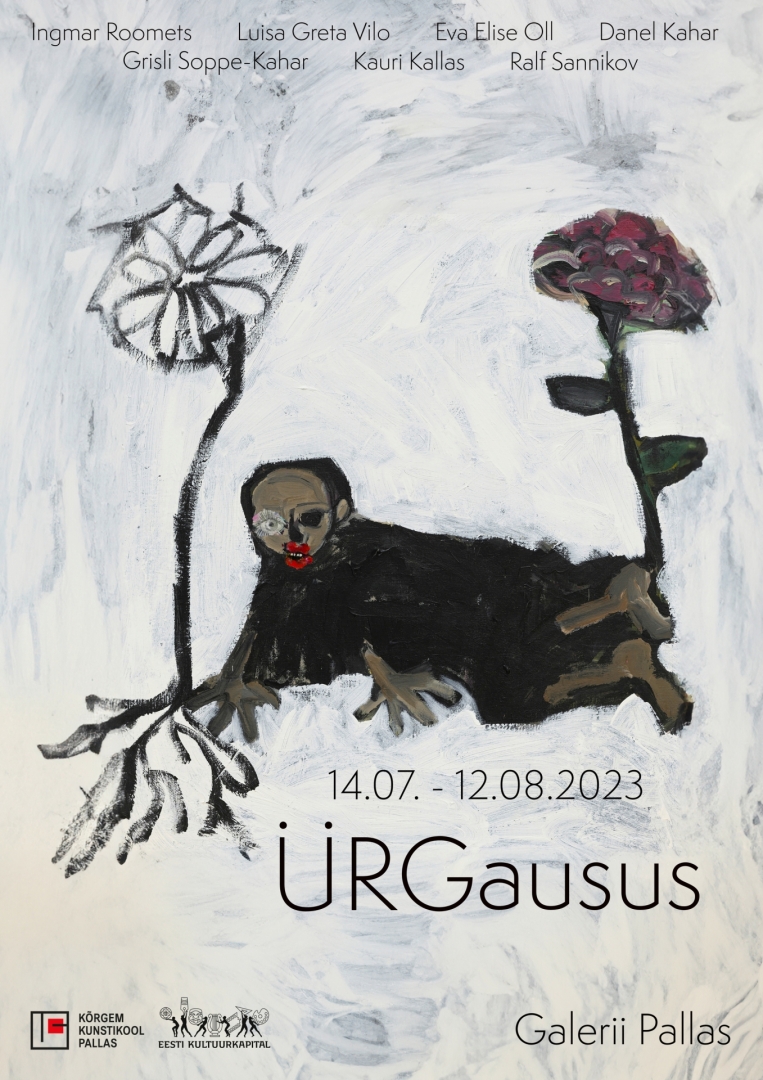On Friday, July 14th, at 4 pm, a group exhibition "Ürgausus / Primal Honesty" will be opened by artists Ingmar Roomets, Danel Kahar, Grisli Soppe-Kahar, Eva Elise Oll, Ralf Sannikov and Luisa Greta Vilo - at Gallery Pallas in Tartu. The exhibition is dedicated to the memory of Eva Elise Oll (24.09.1988 - 16.02.2023), young expressionist, and art scholar, who is unfortunately no longer with us.

The more prosaic purpose of the exhibition, is to bring together artists of the younger generation, who share a similar artistic style, and goal on a cognitive level, and whose work is often described with a common keyword: expressionism.
A shared part with the so-called classic German expressionism can also be found, when looking for it in a constructed way: be it the painterly wildness of Ingmar Roomets, Danel Kahar, and Grisli Soppe-Kahar, the spirit of Die Brücke, a certain art brut madness in the work of Eva Elise Oll, and Ralf Sannikov, direct representation of the human body through contrasts in Luisa Greta Vilo’s photos, or cave painting-esque playfulness in Kauri Kallas’ ceramics. Meanwhile, the works are also united by something more than a mere local resemblance to the classics. They all depict a person with a fleshly body, and face, from which pure emotion reflects in its full rawness, and honesty. Yes, in its primal honesty. The artists are all creatively candid, even innocently robust – not with the aim to shock, but instead to reach primitiveness, the core of being human, buried under layers of modernity.
Through trying to analyze both personal, and collective traumas and fears, the artists process their own experience as a person. Suppressing difficult emotions is something we have been trained to do by society. Whereas pain, and confusion, just like beauty and goodness carry the same amount of virtue, and value, and are both as natural to being human. In these creations, the artists use the power of emotions, and force found through expressiveness. That’s how they become whole.
The exhibition is supported by Estonian Cultural Foundation and Pallas University of Applied Sciences.
Galerii nimi: Gallery Pallas
Address: Riia 11, 51010 Tartu, Estonia
Opening hours: Tue-Sat 11:00 - 18:00
Open: 14.07.2023 — 12.08.2023
Types of art: Mixed media, Ceramics, Painting
Address: Riia 11, 51010 Tartu, Estonia
Opening hours: Tue-Sat 11:00 - 18:00
Open: 14.07.2023 — 12.08.2023